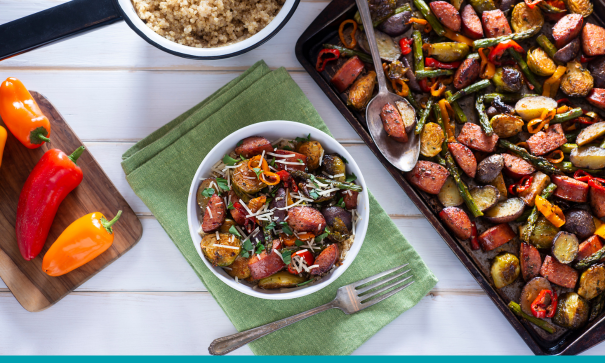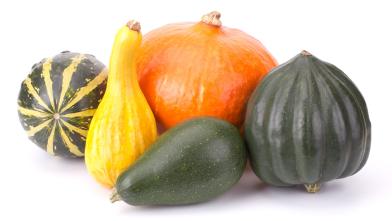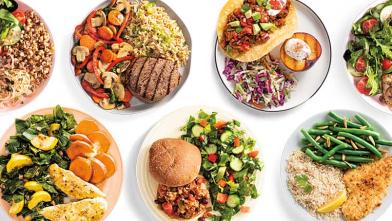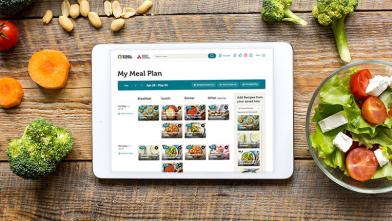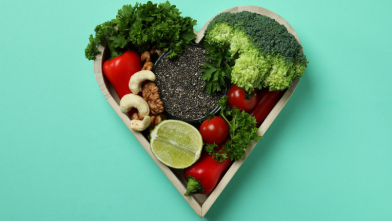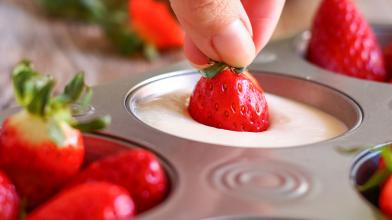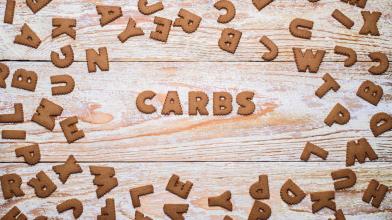Managing diabetes often means paying extra attention to meal planning and preparation, ensuring meals are balanced with a focus on lean protein and non-starchy vegetables. One of the easiest and most convenient ways to achieve this is through sheet pan dinners.
Like the name suggests, the entire meal is cooked on one sheet pan! These meals require minimal effort, involve little cleanup, and can be tailored to fit a diabetes-friendly diet. Here’s how you can simplify your dinners and maintain a healthy lifestyle with the magic of sheet pan cooking.
The Benefits of Sheet Pan Dinners
- Convenience: Sheet pan meals are straightforward. They involve placing all your ingredients on a single baking sheet and letting the oven do the work. This method saves time and reduces the hassle of using multiple pots and pans.
- Minimal cleanup: With everything cooked on one pan, cleanup becomes a breeze. Line your sheet pan with parchment paper or aluminum foil to make cleaning even easier. This approach is particularly beneficial for busy weeknights when time and energy are in short supply.
- Balanced meals: Creating a balanced meal is simpler with a sheet pan. You can easily include a variety of vegetables, lean proteins, and healthy fats, ensuring you get all the essential nutrients.
Tips for Creating Diabetes-Friendly Sheet Pan Dinners
- Focus on non-starchy vegetables: Non-starchy vegetables are low in carbohydrates and can be higher in fiber, making them ideal for people with diabetes. Include veggies like broccoli, cauliflower, bell peppers, zucchini, and Brussels sprouts to add bulk and nutrients without spiking blood glucose (blood sugar) levels.
- Choose lean proteins: Try lean proteins such as skinless chicken breast, turkey, fish, or tofu. These proteins are low in saturated fats and help maintain muscle mass while keeping you full longer. Season them with herbs and spices rather than high-sodium marinades to keep your meals heart healthy.
- Healthy fats: Incorporate healthy fats from sources like olive or avocado oil. These fats are essential for overall health and can help slow the absorption of carbohydrates, preventing rapid spikes in blood glucose levels.
- Portion control: Using a sheet pan allows for easy portion control. Arrange your ingredients in appropriate portions on the pan to ensure a balanced meal. Use the Diabetes Plate as a guide, filling half your plate with non-starchy veggies, one-quarter with lean protein, and the last quarter with quality carbohydrates.
Sample Diabetes-Friendly Sheet Pan Recipe
Sheet Pan Lemon Herb Chicken and Vegetables
Serves 4
Portion: ¼ of the sheet pan
Ingredients:
- 4 boneless, skinless chicken breasts
- 2 cups broccoli florets
- 2 cups bell pepper strips (assorted colors)
- 1 cup cherry tomatoes
- 1 medium zucchini, sliced
- 2 tablespoons olive oil
- 2 tablespoons fresh lemon juice
- 1 teaspoon dried oregano
- 1 teaspoon dried thyme
- 1/2 teaspoon garlic powder
- Salt and pepper to taste
- Fresh parsley for garnish
Instructions:
- Preheat the oven to 400 degrees F. Line a large baking sheet pan with parchment paper or aluminum foil for easy cleanup.
- Prepare the marinade by mixing olive oil, lemon juice, oregano, thyme, garlic powder, salt, and pepper in a small bowl.
- Arrange the chicken breasts on one side of the sheet pan. Brush them generously with the lemon herb marinade.
- Toss the vegetables (broccoli, bell peppers, cherry tomatoes, and zucchini) in the remaining marinade. Arrange them on the other side of the sheet pan around the chicken.
- Bake for 25–30 minutes or until the chicken reaches an internal temperature of 165 degrees F and the vegetables are tender.
- To serve, divide chicken, and veggies between plates or bowls. Top with freshly chopped parsley. Add 1/2 cup cooked brown rice to each serving if your diabetes eating plan allows.
More Sheet Pan Recipe Inspiration
- Sheet pan salmon and asparagus
- Sheet pan chicken, green beans, and potatoes
- Sheet pan roasted turkey and veggies
Sheet pan dinners are a fantastic way to simplify meal preparation while ensuring your meals are nutritious and balanced. With minimal cleanup and endless possibilities for customization, these dinners can fit seamlessly into a busy lifestyle.
By focusing on non-starchy vegetables, lean proteins, and healthy fats, you can create delicious and satisfying meals that help manage diabetes effectively. So, next time you’re planning dinner, reach for a sheet pan!
